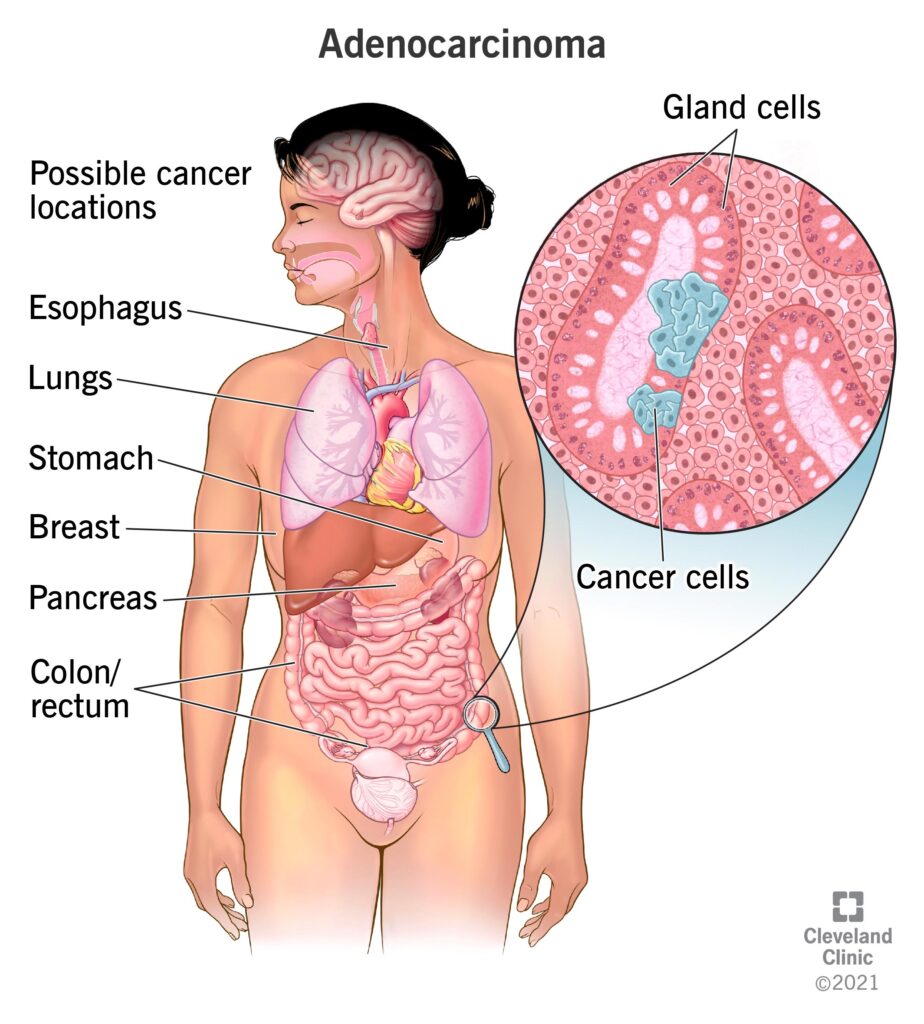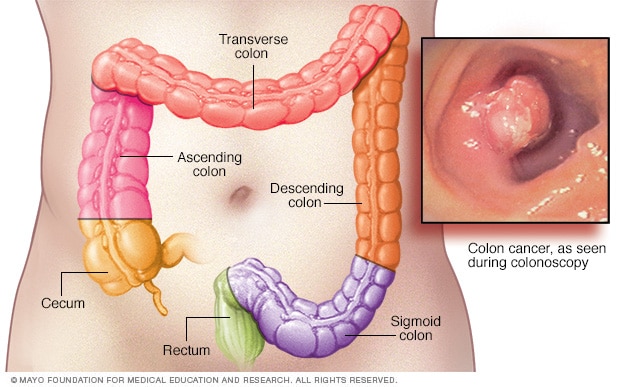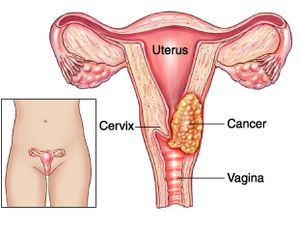CARCINOMAS: A TYPE OF CANCER,TYPES,RISK FACTORS AND THE IMPACT IN NIGERIA AS WELL AS GLOBALLY

1. BIOLOGY OF CARCINOMAS
Carcinomas arise from epithelial cells, which are the cells covering the surfaces of organs, glands, and body cavities. These cells are involved in various functions, including protection, absorption, and secretion. Carcinomas can be further classified based on the type of epithelial cell they originate from:
- Adenocarcinomas: These arise from glandular epithelial cells, which are found in organs such as the lungs, breasts, prostate, and colon. Adenocarcinomas are the most common type of carcinoma, with breast, lung, and colorectal cancers being prominent examples.
- Squamous Cell Carcinomas: Originating from squamous epithelial cells, these carcinomas are typically found in areas such as the skin, esophagus, and cervix. Squamous cell carcinomas are associated with cancers like head and neck cancer, skin cancer, and cervical cancer.
- Basal Cell Carcinomas: These arise from the basal cells of the epidermis, the outermost layer of the skin. Basal cell carcinoma is the most common type of skin cancer, known for its slow growth and low likelihood of metastasis.
2.TYPES OF CARCINOMAS
Carcinomas can develop in various organs and tissues, leading to different types of cancer. Some of the most common types include:
2.1.Breast Carcinoma
Breast carcinoma is the most common cancer in women worldwide. It originates in the epithelial cells lining the ducts or lobules of the breast. There are several subtypes of breast carcinoma, including ductal carcinoma in situ (DCIS), invasive ductal carcinoma, and invasive lobular carcinoma. Risk factors include genetic mutations (such as BRCA1 and BRCA2), hormone replacement therapy, and lifestyle factors like diet and exercise (gco.iarc) (ICCP Portal).

Breast Cancer Patient
2.2. Lung Carcinoma
Lung carcinoma, primarily caused by smoking, is a leading cause of cancer-related deaths globally. It includes two main types: non-small cell lung carcinoma (NSCLC) and small cell lung carcinoma (SCLC). NSCLC, which includes adenocarcinoma and squamous cell carcinoma, accounts for approximately 85% of all lung cancer cases. The high mortality rate is due to late-stage diagnosis and the aggressive nature of the disease (gco.iarc).
2.3. Prostate Carcinoma
Prostate carcinoma is the most common cancer in men, particularly in older age groups. It arises in the glandular cells of the prostate and is typically slow-growing. However, some cases can be aggressive and metastasize to other parts of the body. Screening methods like prostate-specific antigen (PSA) tests have improved early detection, though debates about overdiagnosis and overtreatment persist (ICCP Portal).
2.4. Colorectal Carcinoma
Colorectal carcinoma originates in the epithelial cells of the colon or rectum. It is strongly associated with diet, lifestyle factors, and family history. Screening methods such as colonoscopy have significantly reduced the mortality rate by enabling early detection and removal of precancerous polyps. Colorectal cancer is more common in developed countries, but its incidence is rising in developing regions due to changes in diet and lifestyle (gco.iarc).
2.5. Cervical Carcinoma
Cervical carcinoma primarily arises from the epithelial cells of the cervix and is almost always caused by persistent infection with high-risk human papillomavirus (HPV) types. This cancer is preventable through HPV vaccination and regular screening via Pap smears. In many low-resource settings, cervical cancer remains a leading cause of cancer-related deaths due to limited access to vaccination and screening programs (ICCP Portal).
3. EPIDEMIOLOGY OF CARCINOMAS.
The incidence of carcinomas varies widely across different regions and populations. The global burden of carcinoma is influenced by factors such as genetic predisposition, environmental exposures, and lifestyle behaviors. For instance, the high incidence of lung carcinoma in countries with high smoking rates reflects the strong association between smoking and lung cancer. Similarly, the prevalence of breast and prostate carcinomas in developed countries is linked to lifestyle factors such as diet, physical activity, and reproductive behaviors.
4. RISK FACTORS FOR CARCINOMAS.
Several risk factors contribute to the development of carcinomas, and these can be broadly categorized into genetic, environmental, and lifestyle-related factors:
Genetic Factors: Certain inherited genetic mutations can significantly increase the risk of developing carcinomas. For example, mutations in the BRCA1 and BRCA2 genes are strongly associated with an increased risk of breast and ovarian cancers. Similarly, Lynch syndrome, caused by inherited mutations in DNA mismatch repair genes, is linked to a higher risk of colorectal carcinoma.
- Environmental Factors: Exposure to carcinogens in the environment, such as tobacco smoke, asbestos, and ultraviolet (UV) radiation, is a major risk factor for carcinomas. For instance, smoking is the leading cause of lung carcinoma, while UV radiation from sun exposure is the primary cause of skin carcinomas.
- Lifestyle Factors: Diet, physical activity, and reproductive behaviors can also influence the risk of developing carcinomas. A diet high in red and processed meats has been linked to an increased risk of colorectal carcinoma, while obesity and lack of physical activity are associated with a higher risk of breast and prostate carcinomas.
5. CARCINOMAS IN NIGERIA.
Carcinomas represent a significant public health challenge in Nigeria, where cancer is a leading cause of morbidity and mortality. The country faces unique challenges in the fight against cancer, including limited access to healthcare, late-stage diagnosis, and a lack of comprehensive cancer control programs. Breast and cervical carcinomas are particularly prevalent among Nigerian women, with breast cancer being the most common cancer in the country (ICCP Portal).
5.1. Prevalence and Mortality
According to the Global Cancer Observatory, Nigeria reported over 115,000 new cancer cases in 2020, with carcinomas accounting for a substantial proportion. Breast and cervical cancers alone represented more than 50% of all female cancer cases. The high mortality rates associated with these cancers are largely due to late presentation and inadequate healthcare infrastructure (gco.iarc).
5.2. Challenges in Cancer Control
Nigeria’s healthcare system faces numerous challenges in controlling the burden of carcinomas. These include a shortage of healthcare professionals trained in oncology, limited access to diagnostic and treatment facilities, and a lack of public awareness about cancer prevention and early detection. Additionally, cultural beliefs and stigma associated with cancer can delay diagnosis and treatment, further exacerbating the problem (ICCP Portal).
5.3. Efforts and Initiatives
Despite these challenges, Nigeria has made progress in addressing the cancer burden. The Nigerian government has implemented several initiatives aimed at improving cancer care, including the establishment of the National Cancer Control Plan (NCCP) and the expansion of cancer treatment centers across the country. Furthermore, there has been an increased focus on public health campaigns to raise awareness about cancer prevention, screening, and early detection (ICCP Portal).
6. GLOBAL IMPACT OF CARCINOMAS
Carcinomas account for a significant proportion of the global cancer burden, with millions of new cases diagnosed each year. The World Health Organization (WHO) estimates that cancer is responsible for approximately 10 million deaths annually, with carcinomas being the leading cause of cancer-related deaths worldwide. The economic impact of carcinomas is also substantial, with the cost of cancer care and lost productivity placing a significant burden on healthcare systems and economies.
6.1. Disparities in Cancer Care
There are significant disparities in cancer care across different regions and populations. High-income countries tend to have better access to cancer prevention, screening, and treatment services, leading to lower mortality rates for many types of carcinomas. In contrast, low- and middle-income countries often face challenges such as limited healthcare infrastructure, lack of access to essential medicines, and inadequate cancer control programs, resulting in higher mortality rates (gco.iarc).
6.2Advances in Treatment
Recent advances in cancer treatment have improved outcomes for many patients with carcinomas. Targeted therapies, immunotherapy, and precision medicine have revolutionized the treatment of cancers such as breast, lung, and colorectal carcinomas. These therapies work by targeting specific genetic mutations or proteins involved in cancer growth, leading to more effective and less toxic treatments compared to traditional chemotherapy.
CONCLUSION.
Carcinomas represent a diverse and complex group of cancers that pose significant challenges to global public health. While advances in cancer prevention, screening, and treatment have improved outcomes for many patients, disparities in access to care remain a major issue, particularly in low- and middle-income countries like Nigeria. Continued efforts are needed to address these disparities, improve cancer control programs, and ensure that all individuals have access to the care they need to prevent and treat carcinomas.
References
- Global Cancer Observatory: Cancer in Nigeria.
- Nigeria National Cancer Research Agenda 2024-2028: ICCP Portal.